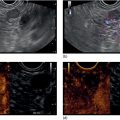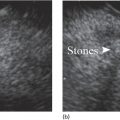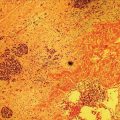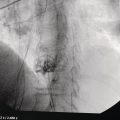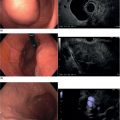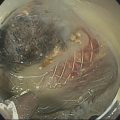Sam Yoselevitz and Ann Marie Joyce Tufts University School of Medicine, Burlington, MA, USA Gallbladder disease is one of the most common gastrointestinal disorders worldwide. It is estimated that there are at least 20.5 million cases of gallbladder disease annually in the United States. Gallbladder pathology encompasses a wide spectrum of disorders including cholelithiasis, cholecystitis, microlithiasis, gallbladder polyps, and carcinoma. Endoscopic ultrasound (EUS) has emerged as a valuable tool in the diagnosis and characterization of gallbladder lesions. EUS is considered to be superior to conventional ultrasound (US) for imaging the gallbladder. With much higher US frequencies, EUS can readily image the structure of the gallbladder and provide high‐resolution images of even the smallest of lesions. Clinically, EUS is a useful diagnostic modality for patients who present with suspected gallstone disease despite a normal conventional US. Because EUS can influence clinical management, it is important to understand this technique and to recognize common gallbladder pathology. Gallstones are the most common biliary pathology. Conventional US is generally considered to be the gold standard for the diagnosis of cholelithiasis, with a sensitivity and specificity of 97% and 95%, respectively. However, multiple studies have demonstrated that EUS is much more sensitive for diagnosing small stones (≤3 mm), particularly in patients who are obese or have other anatomic considerations. In one study of patients with idiopathic pancreatitis by Frossard et al., EUS identified cholelithiasis in 30–40% of cases that that had been missed by conventional US. On EUS, gallstones appear as hyperechoic foci that cast an acoustic shadow and are found in the dependent portion of the gallbladder (Figures 21.1 and 21.2). Two additional clinically significant gallbladder conditions that are frequently described are sludge (Figure 21.3) and microlithiasis (Figure 21.4). These entities are echogenic in appearance but do not cast an acoustic shadow. Sludge also tends to be more viscous and is not necessarily found in the dependent portion of the gallbladder.
21
Gallbladder Pathology
Introduction
Gallbladder stones
Gallbladder polyps
Stay updated, free articles. Join our Telegram channel

Full access? Get Clinical Tree


